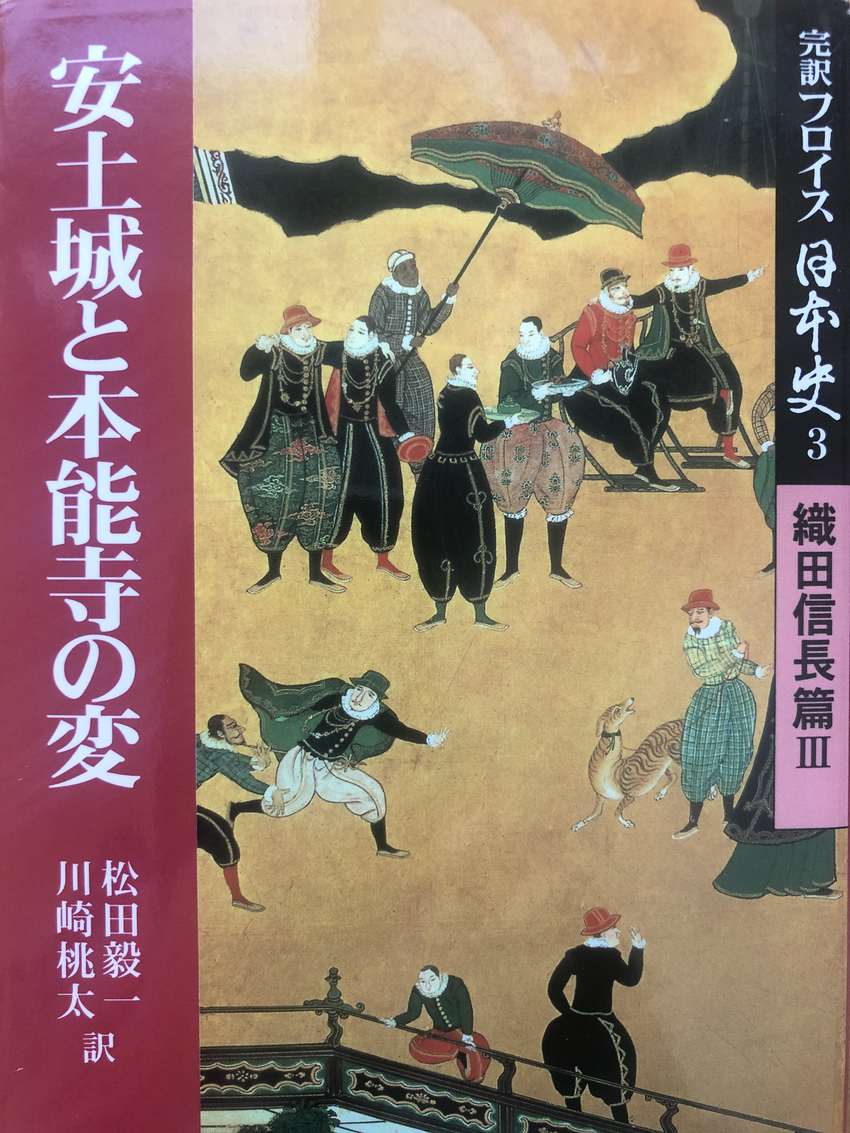「麒麟が来る」最終回
2月
11日
最新の研究に基づく時代考証を十分に取り入れてあり、またドラマとしてのエンターテイメント性も加味した魅力あるものでした。
大河ドラマとしてここ昨今には無い完成度の高いものだったと思います。
日本史最大のミステリーとされる本能寺の変の光秀の動機についてのストーリー展開は申し分ありません。
朝廷や徳川家康、足利義昭などは直接の黒幕ではないが、光秀の決起を後押しした。直接の決起の理由としては、暴君信長を引き止めなくてはならないとする彼の個人が抱く価値観にあった。
時代考証役の小和田さんの推奨している「信長暴君阻止説」が充分説得力があるものと私個人は受け取っています。
エンターテイメント性については、光秀が生き延びていたと言う最終幕。私個人としてはこれはありえないと考えますが、大河ドラマの主人公を殺してしまっては多くの視聴者をがっかりさせると言う思惑も働いたのでしょう。
ここまでの考察なら、私以外でも多くの人がYouTubeなどで同じような持論を展開しています。
ここで無謀にも、ドラマを離れた安土桃山時代における本能寺の変を評価したいと思います。
この光秀の突発的な決起が人々にどのようなインパクトを与え、その生活や思考に影響を及ぼしたのか。
それは、麒麟が来る、すなわち平和な時代を構築するために寄与したのかどうか。
これらを考察するためには、江戸中期以降に多く作られたフィクション性豊富な史料ではなく、当時日記のようにして生々しい時代の空気をそのまま書き残している史料が最も重要であると考えます。
それはポルトガル語で書かれた後、400年間ほど日の目を見ないまま保管されていたルイス・フロイス著「日本史」です。
当時の息遣いが聞こえるほど現場に居合わせた者としての目撃者情報が満載です。
織田信長という中心勢力が瓦解すると、社会は突然無法地帯となり、暴動や殺戮、強盗や追い剥ぎなど各地で起こり、混乱を極めた様子が記録されています。
明智の軍勢が織田の本拠地であった安土に数日後に押し寄せると聞くと、安土の人々は「最後の審判の日を示したように混乱した」とあります。
「婦女の声、子供らの鳴き声、男たちの叫びなど民衆の混乱と狂気の沙汰は慨嘆すべきものがあった。自らの生命を救うに懸命のあまり、家屋や家財は放置されたままであり、かような事態が生じる度に人々が町を去っていったので、我らの恐怖と不安は増大する一方であり、昼夜の別なくそれらの日々は大混乱の中にあった」
これは当時の安土の町に建てられていたセミナリオ(神学校)に滞在していたルイス・フロイス自身による目撃情報です。
「木曜日の朝方になると、近江国出身の身分の高い侍が、事の経過を知って明智側に属することを証明するために自邸に放火した」としてフロイスは驚いています。
「それは非常に美しい豪華な邸であり、安土城に接して建っていたものであり、それが燃えるのが神学校から望見していたが、何のためにそうするのかがわからなかった」とあります。
その後、司祭や修道士とともに町中の人たちと行動を合わせ、市内から抜け出ざるを得なかったとのことです。
光秀自身は天皇や足利将軍などこれまでの中世の社会秩序を重んずるがゆえ、それを維持するための本能寺の変であったのでしょう。
しかしその中世の社会とは、人間の生命が虫けらのように軽んじられ、強いものだけが生き延びる権をもった弱肉強食であり、下克上の世界です。
本能寺の変によって、秀吉による天下統一が実現するまで、その中世のおぞましい殺戮世界へと後退してしまったと言えるのではないでしょうか。その時代を後退させた張本人が光秀自身であり、決して褒められた存在でないと考えます。
繰り返しますがこれは私個人の意見です。
これに反論してくださる方がいたら、うれしく思います。
(写真は数年前に訪れた安土町天守閣跡と城への入り口付近です)
I watched the last episode of "The Kirin Cometh.
It was a fascinating drama that fully incorporated historical research based on the latest research, and also added entertainment value to the drama.
I think it was a high level of perfection that has not been seen in recent years as a Taiga drama.
The story of Mitsuhide's motive for the Honnoji Incident, which is considered to be the greatest mystery in Japanese history, was perfectly developed.
The Imperial Court, Ieyasu Tokugawa, and Yoshiaki Ashikaga were not the direct masterminds, but they did encourage Mitsuhide's decision. The direct reason for his decision was the values held by his person that the tyrant Nobunaga had to be stopped.
I personally find the theory of stopping Nobunaga's tyranny, as recommended by Mr. Owada, the historical reviewer, to be sufficiently convincing.
As for the entertainment value, the final act that Mitsuhide had survived. I personally do not think this is possible, but I suppose they thought that killing off the main character of a Taiga drama would disappoint many viewers.
So far, many people besides me have developed similar theories on YouTube.
Here, I would like to recklessly evaluate the Honnoji Incident in the Azuchi-Momoyama period, away from the drama.
What kind of impact did this sudden decision by Mitsuhide have on the people and how did it affect their lives and thoughts?
Did it contribute to the coming of the Kirin, i.e., to the building of a peaceful era?
In order to examine these questions, I believe that the most important historical documents are not the fictional documents that were produced in the mid-Edo period and later, but rather the documents that were like diaries at the time, and that left the vivid atmosphere of the times as they were.
This is the "History of Japan" by Luis Frois, which was written in Portuguese and kept in storage for 400 years without being seen by anyone.
The book is full of eyewitness information from people who were there, so we can hear the breath of the time.
When the central power of Oda Nobunaga collapsed, society suddenly became a lawless zone, with riots, killings, robberies, and raids occurring all over the country, recording the chaos that ensued.
When the people of Azuchi heard that Akechi's army would be coming to the Oda stronghold of Azuchi in a few days, they were "as confused as if it were the day of the final judgment.”
“The confusion and insanity of the people, including the voices of women and children, the cries of men, was something to be marveled at. Our fears and anxieties increased as people left the town whenever such a situation arose, and our days were in turmoil day and night.”
This is an eyewitness account by Luis Frois himself, who was staying at a seminary built in the town of Azuchi at the time.
Frois was surprised to learn that on Thursday morning, a high-ranking samurai from Omi Province set fire to his house to prove that he belonged to the Akechi side.
“It was a very beautiful and luxurious mansion, standing next to Azuchi Castle, and I could see it burning from the seminary, but I could not understand why he was doing it.”
Later, he and the priests and monks were forced to act together like the people of the town and slip out of the city.
Mitsuhide himself respected the social order of the Middle Ages, including the emperor and the Ashikaga shoguns, and the Honnoji Incident was probably an attempt to maintain that order.
However, the medieval society was a world where human life was disregarded like insects and only the strongest had the right to survive.
With the Honnoji Incident, we can say that we have regressed to the horrific killing world of the Middle Ages until the unification of Japan by Hideyoshi. Mitsuhide himself was the one who caused that era to regress, and I don't think he should be praised for it.
Again, this is my personal opinion.
I would be happy to hear from anyone who would like to refute this.





